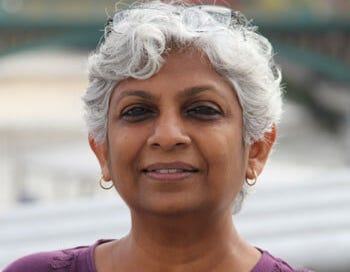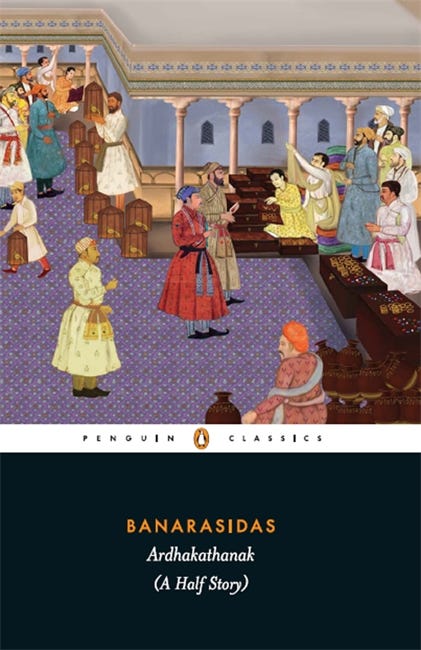Four Questions with Author and Translator Rohini Chowdhury
She walks us through her translation process
I met Rohini Chowdhury through her newsletter, The Story Birds, and I’m so glad I did. Rohini is a literary translator and the author of several children’s books in both Hindi and English. She translated Ardhakathanak, a 17th-century text widely considered the first autobiography in an Indian language and Ramcharitmanas, an epic deemed one of the greatest works in Hindi literature.
Rohini also works to preserve folk literature and stories traditionally passed down orally. Her website, Long Long Time Ago, is a library of such tales from around the world. The Story Birds is an extension of her love of stories. It’s a regular newsletter featuring myths, folklore and even original fiction.
Rohini and I had a great conversation about storytelling and translation.
Our conversation has been edited and condensed for clarity.
So much of your work revolves around stories and storytelling. What sparked that interest?
My childhood was filled with stories. My grandmother had a story for everything. She spoke to me through stories, taught me through stories. Most were either make up or had their root in folktales.
I remember I had the chickenpox. I was five years old, and I had a very bad attack. I was in misery. I had to be distracted. On the worst night, my grandmother stayed up the entire night, lying next to me, telling me a story. She started the story at 8 or 9 in the evening and kept it up till the sun rose. She told me this story about a prince and what happened to him, just making it up as she went along. I wish I could remember the details.
I find children are not told stories so much as read stories. That oral story, where someone is either making up a story or repeating a story they heard from someone else, is not as common as it once was. I’m sure it’s happening in some places, but I don’t see it. When you read a story to a child, it’s written down in a fixed form. When you tell a story without a book by your side, you invent as you go on. That’s a critical difference.
So, I wanted to preserve some of the tales around us. So, I’ve been gradually gathering them for the last 20 years or so. And I think I have about 300 to 350 stories on there now and plans for more.
How do you go about collecting stories?
In an ideal world, I would travel and speak to people. I would spend time and ask them to tell me their stories. But, unfortunately, I have not been really able to do so. Instead, I try and talk to whoever I can, wherever they are.
Some of the folktales on the website are collected in this way. Either someone told it to me or someone told someone who told me. Many of the stories are not from primary sources, but from secondary sources and not even in the original language. They were written down and then translated many times.
I do a lot of research for every story I put up on the website, even the Brothers Grimm. Even though they’re very well known, I went and found translations from Margaret Hunt. They’re the definitive translations. Sometimes, I can’t find a translation. So then, I translate, if I can from the original. I’ve mainly done that for Indian texts because I have the languages.
Speaking of translations, what is your translation process like?
The first thing I do is chose a text. The big translations I have done are landmark texts in some way in the languages I translate, pre-modern and modern Hindi. My first translation was the first autobiography written in an Indian language, in the way we understand the term autobiography today. Before that, there was no such writing. So that’s a critical text, and that was why I chose it, apart from the fact that the text itself was absolutely fascinating. It spans the reign of three Mughal emperors and describes an eyewitness account of their reigns. The writer, Banarasidas, went on to become one of the more important spiritual leaders of Jainism.
After choosing a text, I read it. I’ve read it before, but then I read it from the point of view of a translator. That’s a closer engagement with the text than just reading it as a reader.
What comes next?
Then I start the translation. The autobiography was in about 675 stanzas, and I started with the first 30. The beginning is the longest, most intense period of work, in terms of translation time because that’s when I’m trying to find the right register, voice, and style. First, I experimented with prose and that didn’t work, and then I experimented with rhyming translation. That didn’t work. Finally, I settled on prose verse, but that wasn’t entirely satisfactory. I think I did about four or five drafts of just the first 30 stanzas until I got the style, the register, the voice, the atmosphere of the text to my satisfaction.
Once that’s done, the translation begins in earnest. So far, my translations have had a publishing deadline, so I set a number of lines I try to do each day. Sometimes I do more because the passages are easier, sometimes I get stuck, and maybe two lines take an entire day to get right.
Once it’s done, I go through the whole book and then send it to the publisher, who, of course, goes through the whole thing. There’s back and forth on copy editing, and then, finally, it’s done.
I’ve always been fascinated by how translators capture the spirit — and language — of a book and appreciate the time Rohini took to explain her process to me.
You can check out her collection of folklore here and subscribe to The Story Birds here.
I’ll be back in your inboxes Monday with more book recommendations. If you have an idea for a theme, let me know!
What to Read If is a free weekly book recommendation newsletter. Need a rec? Want to gush about a book? Reply to this email, leave a comment or find me on Twitter @elizabethheld.
If you’re reading this on Substack or were forwarded this email, and you’d like to subscribe, click the button below.
Disclosure: I am an affiliate of Bookshop.org and I will earn a commission if you click through and make a purchase.





